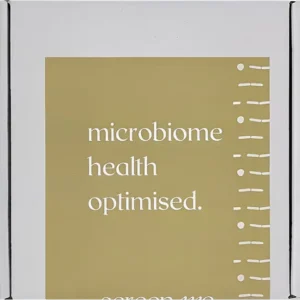We’ve launched our menstrual blood microbiome test to provide a non-invasive way to assess the uterine (endometrial) microbiome. Understanding the balance of bacteria and other microorganisms in the uterus can give valuable insights into reproductive and overall health.
What is the Uterine Microbiome?
The uterine microbiome consists of the unique composition of bacteria and other microorganisms present in the uterine environment. This microbiome varies based on factors such as age, ethnicity, hormonal changes, and the use of intrauterine devices (IUDs).[1]
A healthy endometrial microbiome is typically dominated by Lactobacillus species, which are associated with balanced reproductive health. [2].
However, when the microbiome is out of balance, known as dysbiosis, Lactobacillus does not dominate. Instead, bacteria like Streptococcus, Prevotella, Gardnerella, and Atopobium may become more prevalent, potentially leading to health issues [3].
Why is the Uterine Microbiome Important?
While we know that Lactobacillus species play a key role in vaginal microbiome in protecting intimate health (if not- check out our Vaginal Microbiome Clinic page here) – recent research shows they are also crucial for the uterine microbiome.
Imbalances in this microbiome have been linked to various health concerns, including: Endometriosis, fertility, IVF success, immune system functioning, inflammation, and more[4].
- Fertility
- An abnormal endometrial microbiome is linked to recurrent embryo implantation failure[5].
- A balanced microbiome correlates with higher success rates in live birth outcomes[6].
2. Impact on Vaginal Microbiome
- Pathogenic bacteria found in endometrial microbiome, are similar to those found lower in the genital tract of women with BV[7].
- For more on the importance of the vaginal microbiome, visit our Vaginal Health Clinic page here.
It’s important to note that while these associations are compelling, the uterine microbiome test is not a diagnostic tool. This area of research is rapidly evolving, and ongoing studies are needed to fully understand the role of the endometrial microbiome in various health conditions. Therefore, at ScreenMe, not only do we provide answers, but we also work hard to contribute to the research into the black box that is women’s reproductive health!
Why Choose ScreenMe’s Endometrial Microbiome Test?
Traditional methods of assessing the endometrial health are often invasive. ScreenMe’s endometrial microbiome test offers a non-invasive alternative that provides valuable context for your intimate, reproductive, and sexual health. You can collect your sample in three simple ways:
- Using a menstrual cup
- Collecting menstrual blood
- Taking a vaginal swab on the first day of your period
How Does This Differ From a Vaginal Microbiome Test?
While the endometrial and vaginal microbiomes are distinct, they are interconnected. There is increasing evidence to suggest that your vaginal microbiome can influence your endometrial microbiome, and vice-versa. For example, often those with vaginal microbiome dysbiosis (imbalance), also have uterine microbiome dysbiosis (imbalance)[8].
Can This Test Be Used Alongside a Vaginal Microbiome Test?
Absolutely. Combining both tests allows you to fully investigate your female reproductive microbiomes; providing deeper insight and context.
Conclusion
As research into the endometrial microbiome advances, it’s becoming increasingly clear that this microbial environment plays a key role in numerous female reproductive health issues. This underscores the critical need for continued investment in female healthcare research to fully understand these complex relationships. While the science is still emerging, the potential implications for fertility, endometriosis, and overall reproductive health are promising.
We are excited to contribute to the progress in this field and will keep our community updated with new findings. Endometrial microbiome tests are now available on our site and can be purchased here.
References:
Baker, J. M., Chase, D. M., & Herbst-Kralovetz, M. M. (2018). Uterine microbiota: residents, tourists, or invaders? Frontiers in Immunology, 9, 208.
Chen, C., Song, X., Wei, W., Zhong, H., Dai, J., Lan, Z., … & Zhou, J. (2017). The microbiota continuum along the female reproductive tract and its relation to uterine-related diseases. Nature Communications, 8(1), 875.
Fang, R. L., Chen, L. X., Shu, W. S., Yao, S. Z., Wang, S. W., & Chen, Y. Q. (2017). Barcoded sequencing reveals diverse and distinct endometrial microbiota of women with endometriosis and infertility. Theranostics, 7(6), 1353-1361.
Khan, K. N., Fujishita, A., Kitajima, M., Hiraki, K., Nakashima, M., Ishimaru, T., & Masuzaki, H. (2019). Molecular detection of intrauterine microbial colonization in women with endometriosis. European Journal of Obstetrics & Gynecology and Reproductive Biology, 244, 16-23.
Moreno, I., Codoñer, F. M., Vilella, F., Valbuena, D., Martinez-Blanch, J. F., Jimenez-Almazan, J., … & Simon, C. (2016). Evidence that the endometrial microbiota has an effect on implantation success or failure. American Journal of Obstetrics and Gynecology, 215(6), 684-703.
Ravel, J., Moreno, I., Simón, C., Borenstein, E., Llamas, R., Torres, P. J., … & Codoñer, F. M. (2021). Vaginal microbiome as a key player in reproductive health. Nature Reviews Urology, 18(4), 209-222.
Verstraelen, H., Vilchez-Vargas, R., Desimpel, F., Jauregui, R., Vankeirsbilck, N., Weyers, S., … & Pieper, D. H. (2016). Characterization of the human uterine microbiome in non-pregnant women through deep sequencing of the V1-2 region of the 16S rRNA gene. PeerJ, 4, e1602.
Fariba Khonsari
[1] https://www.ncbi.nlm.nih.gov/pmc/articles/PMC8745284/#B9-ijms-23-00485
[2] https://www.ncbi.nlm.nih.gov/pmc/articles/PMC8745284/
[3] https://www.ncbi.nlm.nih.gov/pmc/articles/PMC10054712/
[4] https://www.ncbi.nlm.nih.gov/pmc/articles/PMC8745284/
[5] https://www.ncbi.nlm.nih.gov/pmc/articles/PMC10054712/
[6] https://www.ncbi.nlm.nih.gov/pmc/articles/PMC10054712/
[7] https://www.ncbi.nlm.nih.gov/pmc/articles/PMC10054712/
[8] https://www.ncbi.nlm.nih.gov/pmc/articles/PMC8745284/#B16-ijms-23-00485




